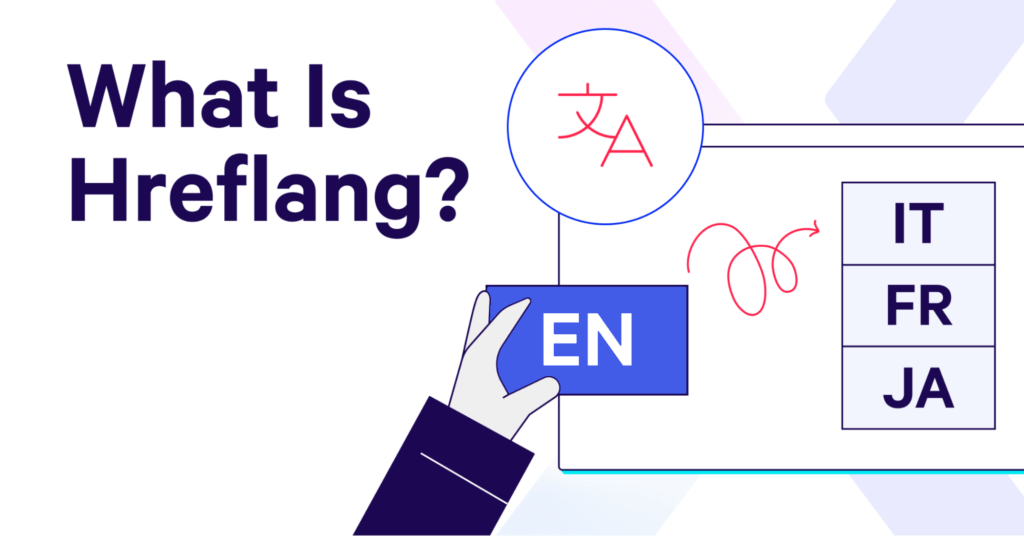As the internet has become increasingly global, businesses and websites are catering to audiences from various countries and cultures. For those operating internationally, one essential tool for maximizing SEO is the use of Mastering hreflang tags.
These tags ensure that search engines serve the right version of a webpage to users based on their language or geographical location, thus improving both user experience and search engine ranking.
In this comprehensive guide, we will explore how to improve SEO with hreflang tags, what they are, why you need them, how they work, and the difference between hreflang tags and HTML lang tags. We will also discuss hreflang tag generator tools and how they can simplify the process.
What Are Hreflang Tags

Hreflang tags are HTML attributes used to indicate the language and regional targeting of a webpage. By using these tags, you tell search engines which version of your content is appropriate for users based on their language and location.
This is especially useful for websites that offer the same content in multiple languages or versions for different regions, as it prevents issues with duplicate content and helps direct users to the correct page.
Introduced by Google in 2011, hreflang tags help search engines understand the relationship between different versions of a webpage. These tags are not visible to users but are crucial in helping search engines serve the right content to the right audience.
Example of an Hreflang Tag
Here is what a basic hreflang tag looks like:
<link rel="alternate" hreflang="en" href="https://www.example.com/en/" />
In this case:
rel="alternate"tells the search engine that there is an alternative version of this webpage.hreflang="en"specifies that the alternative version is for English-speaking users.href="https://www.example.com/en/"directs to the URL of the English version of the page.
What Hreflang Tags Look Like
Hreflang tags are placed in the <head> section of your HTML or in an XML sitemap. Each hreflang tag specifies the language and regional targeting. For example:
<link rel="alternate" hreflang="en-us" href="https://www.example.com/us/" />
<link rel="alternate" hreflang="en-gb" href="https://www.example.com/uk/" />
<link rel="alternate" hreflang="fr-fr" href="https://www.example.com/fr/" />hreflang="en-us": Targets English-speaking users in the United States.hreflang="en-gb": Targets English-speaking users in the United Kingdom.hreflang="fr-fr": Targets French-speaking users in France.
These tags ensure that users from different regions are directed to the appropriate version of the site, enhancing user experience and avoiding confusion.
Why You Need Hreflang Tags

1. Improving SEO
The most significant benefit of using hreflang tags is their impact on search engine optimization (SEO). By properly implementing these tags, you ensure that the correct version of your page is served to users, preventing issues with duplicate content.
Duplicate content can confuse search engines and dilute your ranking, but hreflang tags eliminate this issue by specifying which version of the page is intended for which audience.
For instance, if your website has an English version for the U.S. and another for the U.K., hreflang tags help search engines understand that these are not duplicate pages but rather content tailored for different regions.
2. Providing a Better User Experience
Hreflang tags improve user experience by ensuring that visitors are directed to the version of the site that best suits their language and location.
This reduces bounce rates and increases engagement, as users are more likely to interact with content that is relevant to their needs and preferences.
For example, a Spanish-speaking user in Spain should be directed to the Spanish version of the site rather than the English one, improving their overall experience.
3. Avoiding International SEO Issues
Without hreflang tags, search engines may not understand the geographic or linguistic relevance of different pages, which can result in:
- Users being directed to the wrong version of a page.
- Search engines incorrectly indexing the wrong version of a page for a region.
- Confusion between different versions of a site, leading to lower rankings and traffic in different regions.
Hreflang tags solve these problems by clearly defining which content is meant for which audience, helping avoid cannibalization and ranking conflicts between different versions of the same site.
How Hreflang Tags Work
1. Understanding User Search Context
When a user performs a search on Google, the search engine considers various factors to determine which results to display. Two key elements in this process are:
- Language Preferences: This is typically inferred from the user’s browser settings, search history, or even their IP address. For instance, if a user’s browser is set to Spanish, Google understands that the user prefers content in that language.
- Geographic Location: Google also takes the user’s physical location into account. If a user is in Mexico, Google is more likely to serve results that are geographically relevant to that area.
By combining these factors, Google can better match users with content that meets their linguistic and regional needs.
2. The Role of Hreflang Tags
Hreflang tags act as indicators for search engines, explicitly stating which language and regional versions of a webpage exist. This is crucial for websites that provide content in multiple languages or cater to different regions.
Example Scenario:
- Suppose there’s a website selling shoes that has versions in both Spanish and English.
- The Spanish version is specifically tailored for users in Mexico, while the English version might be aimed at users in the U.S. or other English-speaking countries.
The website’s hreflang tags might look like this:
htmlCopy code<link rel="alternate" hreflang="es-mx" href="https://www.example.com/mx/" />
<link rel="alternate" hreflang="en-us" href="https://www.example.com/us/" />
<link rel="alternate" hreflang="en-gb" href="https://www.example.com/uk/" />
Here’s what happens when a user in Mexico searches for shoes:
- Google recognizes that the user is searching from Mexico and that their language preference is Spanish.
- It then checks the hreflang tags for the relevant website.
- Based on the hreflang tag
hreflang="es-mx", Google serves the Spanish version of the site (https://www.example.com/mx/), ensuring the user lands on the page that is most relevant to them.
3. Implementation Options
Hreflang tags can be implemented in two primary ways:
a. In HTML Code:
- Hreflang tags can be directly embedded within the
<head>section of each webpage. This method ensures that each page communicates its relationships with other language or regional versions clearly. - For example, on the Spanish version page, you would include tags that link to the English version and vice versa, creating a network of references among different versions.
b. In XML Sitemaps:
- Alternatively, hreflang attributes can be included in an XML sitemap. This is particularly useful for larger websites with numerous pages and language versions.
- By placing hreflang tags in the sitemap, search engines can easily crawl and understand the relationships between different versions of the site without needing to parse individual HTML files.
XML Sitemap Example:
xmlCopy code<url>
<loc>https://www.example.com/mx/</loc>
<xhtml:link rel="alternate" hreflang="es-mx" href="https://www.example.com/mx/" />
<xhtml:link rel="alternate" hreflang="en-us" href="https://www.example.com/us/" />
</url>
4. Consistency in Implementation
For hreflang tags to function effectively, consistency is key:
- Every version of your content (e.g., Spanish for Mexico, Spanish for Spain, English for the U.S., etc.) must reference all other language versions through hreflang tags.
- Each version must include a self-referential hreflang tag pointing to itself. This creates a clear web of interconnected pages that search engines can follow.
Example of a Self-Referential Hreflang Tag:
<link rel="alternate" hreflang="es-mx" href="https://www.example.com/mx/" />
<link rel="alternate" hreflang="en-us" href="https://www.example.com/us/" />
<link rel="alternate" hreflang="es-mx" href="https://www.example.com/mx/" /> <!-- Self-reference -->
In short, hreflang tags work by providing clear signals to search engines about which versions of a webpage are relevant for users based on their language and location.
By implementing these tags correctly—either within the HTML code of individual pages or in XML sitemaps—websites can enhance their SEO, avoid issues with duplicate content, and improve the overall user experience.
The key to success lies in ensuring consistent implementation across all versions of your site, enabling search engines to deliver the most appropriate content to users around the world.
Hreflang Tags vs. HTML Lang Tags
While hreflang tags and HTML lang attributes both deal with language, they serve different purposes:
- Hreflang Tags: These tags tell search engines which version of a webpage should be shown to users based on their language and location. They are crucial for international SEO and prevent issues with duplicate content.
- HTML Lang Tags: These tags are used within the
<html>tag to declare the language of the content. They help browsers and assistive technologies (like screen readers) understand the language of the page, but they don’t affect search engine rankings or indicate geographic relevance.
Here’s an example of an HTML lang tag:
<html lang="en">This tag specifies that the content is in English but does not indicate any regional targeting or alternative versions of the content. Unlike hreflang tags, the lang attribute is more for accessibility and browser understanding rather than SEO.
Hreflang Generator Tools
Managing hreflang tags manually, especially for large, multilingual websites, can become a time-consuming and error-prone process. As websites grow and offer content in multiple languages and regions, keeping track of each version becomes increasingly difficult.
Fortunately, there are several hreflang generator tools available that automate this process, helping to ensure that your hreflang tags are accurate and correctly implemented. Below are some of the most popular tools:
1. Hreflang.org
Hreflang.org is a user-friendly tool designed to help website owners generate hreflang tags by simply entering the different URLs of their site’s language and regional variations. The tool simplifies the process by allowing you to input your URLs and the corresponding language and region codes. It then generates the appropriate hreflang tags that you can insert into the <head> section of your webpages or your XML sitemap.
- Benefits: Straightforward and intuitive interface.
- Best For: Small to medium-sized websites that need a quick solution for generating hreflang tags.
2. SEO Scout Hreflang Generator
SEO Scout offers a more comprehensive hreflang generator tool with advanced functionality. In addition to helping you generate hreflang tags, SEO Scout’s tool also includes a validation feature that checks your hreflang implementation for errors, ensuring that the tags are correct and follow best practices. It’s particularly useful for auditing existing hreflang tags to identify inconsistencies or missing elements.
- Features: Hreflang tag generation and validation tools to ensure accuracy.
- Benefits: Prevents common hreflang errors and offers audit features.
- Best For: Large websites or businesses that want to ensure their hreflang tags are flawless and error-free.
Why Use Hreflang Generator Tools?
1. Efficiency
Manually creating hreflang tags can be cumbersome, especially for websites with many regional and language-specific pages. Hreflang generator tools automate the process, saving you time and effort.
2. Accuracy
Generating hreflang tags manually increases the risk of errors, such as using the wrong language or region codes, missing tags, or self-referential issues. These errors can lead to poor international SEO performance. Hreflang generators ensure the correct format and language/region codes are used consistently across your website.
3. Scalability
As your website grows and adds more language or region-specific content, keeping hreflang tags updated can become overwhelming. These tools allow you to scale easily, automatically generating hreflang tags for new pages and ensuring everything remains consistent.
4. Preventing SEO Issues
Incorrect hreflang tags can lead to duplicate content issues or misdirected traffic. Using a tool that generates and validates hreflang tags helps you avoid these problems, ensuring that the correct content is displayed to users in the appropriate language and region, and that Google indexes the right version of each page.
Hreflang generator tools are essential for website owners who manage multilingual or multi-regional websites.
By automating the process of creating and validating hreflang tags, these tools help ensure that your website is optimized for international audiences, improving your SEO performance and delivering a better user experience.
Whether you run a small site or manage a large, global enterprise, using a hreflang generator tool will save time and reduce the risk of errors, ultimately benefiting your international SEO efforts.
How to Improve SEO with Hreflang Tags
Proper implementation of hreflang tags is essential for improving SEO for multilingual and multi-regional websites. Here are some steps to optimize your SEO with hreflang tags:
1. Ensure Correct Language and Regional Targeting
Make sure that you are using the correct ISO 639-1 language codes and ISO 3166-1 alpha-2 country codes in your hreflang tags. Double-check that the right versions of your site are being served to the intended audiences.
2. Implement Consistent Tagging
Every version of your content should include hreflang tags for all other versions, including a self-referential hreflang tag. This consistency helps search engines understand the relationships between different pages and ensures the correct content is shown to the right audience.
3. Audit Your Hreflang Tags Regularly
Errors in hreflang implementation, such as incorrect language codes, broken URLs, or missing tags, can hurt your SEO efforts. Use tools like Google Search Console and Screaming Frog to regularly audit your hreflang tags and fix any issues.
4. Use XML Sitemaps
If your site has a complex structure or many regional variations, using an XML sitemap to manage hreflang tags can be more efficient than embedding the tags in HTML. Ensure that your sitemap is regularly updated and submitted to search engines for crawling.
Use Hreflang Tags for a Better User Experience
Hreflang tags are not only beneficial for SEO but also for providing a seamless user experience. When visitors land on the version of your site that matches their language and location, they are more likely to engage with your content, stay on your site longer, and convert into customers.
By ensuring that users see the most relevant version of your content, hreflang tags help improve user satisfaction and, ultimately, your bottom line.
In conclusion, hreflang tags are an essential tool for any website targeting multiple languages and regions. They help prevent duplicate content issues, improve search engine rankings, and ensure that users are directed to the version of the site that is most relevant to them.
With proper implementation and regular audits, hreflang tags can significantly enhance both your SEO performance and user experience.






